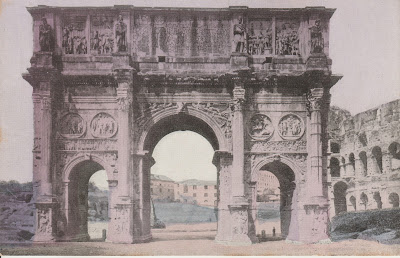Old Cottages at Dunster, Somerset, England
A photograph of quaint old cottages at Dunster in the Somerset region of England is featured on this unused postcard printed by J. Salmon Ltd with the number 16617 visible at the lower right corner. The card does not have an information blurb on the reverse.
Dunster is a village with a population of a little over 800 people. It is located within the north-eastern boundary of Exmoor National Park on the Bristol Channel. Iron Age habitation is evidenced by hillforts. There is a castle called Dunster Castle that was built shortly after the Norman Conquest of 1066 by William I de Moyon. The village grew up around the castle and became a center for wool and cloth production in the 13th century. “The Shambles” where the wool market was held was demolished in 1825 but the old Yarn Market from the 1600s still remains. The River Avill, just a half mile from the village, and its harbor, Dunster Haven, were used to aid in exporting wool during the Saxon times but this was discontinued during the 17th century when the dykes, meadows, and marshes had new land added near the shore.
Today there are a variety of different shops for both local people and tourists. Some fun trivia: On the evening of May 1 each year the Minehead Hobby Horse visits Dunster accompanied by the beating of a loud drum. The hobby horse dances its way about the town on up to Dunster Castle. On the 3rd Friday in August the village hosts the Dunster Show where local businesses and producers showcase their work and livestock, including horses, cattle and sheep. Also, a more recent tradition is “Dunster by Candlelight” held on the first Friday and Saturday of December when this “remarkably preserved medieval village turns its back on the present and lights its streets with candles.” There is a candle lighting activity with a procession of children and their families accompanied by stilt-walkers in colorful costumes who put up the lanterns.
For additional information, see:
https://en.wikipedia.org/wiki/Dunster
https://en.wikipedia.org/wiki/Dunster_Castle







.JPG)
.JPG)


